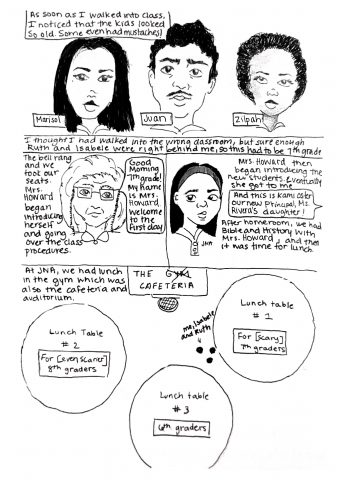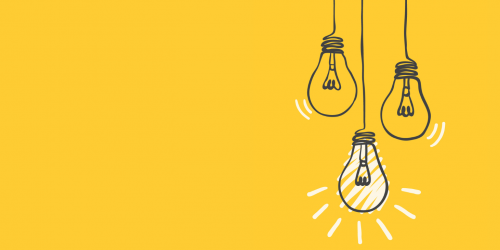
Although insight may strike anyone, it takes courage and creativity to see an idea through to completion. Photo: Pixabay
Although insight may strike anyone, it takes courage and creativity to see an idea through to completion. The decision to act can be powerful and life-changing, not only for the person who carries it out but also for those they impact through doing so.
The following reflections give insight into just what inspires Andrews students Marcel Mattox and Kamila Oster—in their art, in their studies, in their plans for the future and, perhaps most importantly, as they interact with each person they encounter.
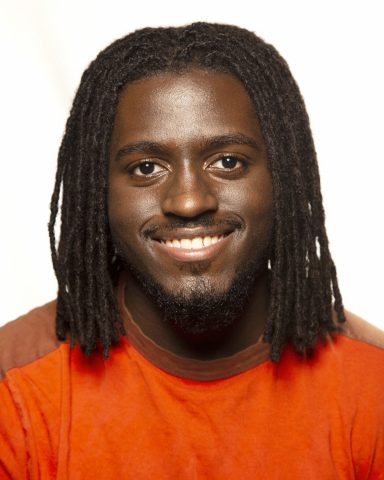
by Marcel Mattox
I started my freshman year at Andrews University as a Graphic Design major—the major that brought me to Andrews in the first place. Like a lot of high school graduates I didn’t know what I wanted to do, but I knew what I liked to do.
Growing up, I’ve gone through wanting to be an astronaut/astronomer, martial artist, marine biologist, artist, animator, poet and superhero. I had a love of illustration, art, animation and a curiosity toward film. A graphic design major required classes on several of these subjects, so I went for it. I ended up learning a lot about composition, design and color theory, and thoroughly enjoyed my time in the classes.
Art has had anything but a brief impact on my life. You know how certain things just make people’s eyes light up? That’s been art for me. I grew up reading and watching superheroes and the fantastical worlds in which they live. So eventually, naturally, I started wanting to create worlds of my own. Once I started seeing art in my cartoons, I started to see it everywhere—in the books I read, in the games I played and the environment surrounding me.
I’m a very optimistic, idealistic person, and this is reflected in a lot of my art. A lot of it is saturated with bright colors and inspirational ideas. In my art you’ll find heroes, way too much starlight, and hopefully ideas that can inspire people as others have done for me. I like to draw with a lot of bright colors and love to emphasize lighting in my artwork as well. The medium I use is primarily digital, where a plethora of tools are at the tips of my fingers. People have responded positively to my art and what I hope is that they take inspiration from it. One of the coolest things is that art isn’t confined to one medium. You can do so many different things in art. You can leap and bound over countless mediums, and this freedom you can find in art is also why I’m proud to be an artist.
At the end of my sophomore year, I decided to switch tracks. Just like a painter trying out new mediums, I switched to a Social Work major, added a French minor and converted my Graphic Design major into a minor. The French minor was added because my mom’s side of the family is French, as evidenced by my name, Marcel.
My logic for choosing social work was that I like helping people, and the art I do was never reliant on my major. My desire to help people most likely originated from the superhero stories I grew up watching on screen. They always fought for the greater good, fighting for others who couldn’t fight for themselves, and seeing them like that made me want to fight for people too. I think that’s what led me to the new major.
My favorite part, besides the awesome people in the School of Social Work, is learning about how to help people, or more specifically how to help people help themselves. My studies so far have taught us about the methods and resources we can give our clients. As social workers, we believe in empowering people to be their own superheroes, and I love that.
My artistic interests still stick with me, and I hope to keep them with me as time goes on, in addition to finding new interests. I plan to be a therapist through my social work career and create art on the side. My creative pursuits keep my mind fresh and help me stay excited about life and hopefully help me pass on that excitement.
One could argue that an artist’s hands are their most important asset. This is probably correct for obvious reasons, but I would say a close second and third are their eyes and their heart. The eyes because how you see the world and what you focus on will be what you create. And the heart because that’s what inspires and helps you to continue creating.
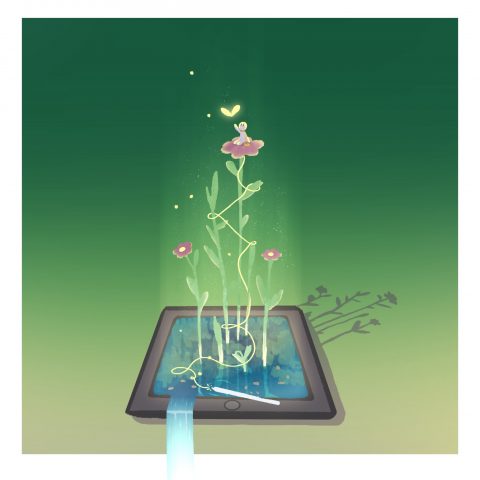
by Kamila Jolie Oster
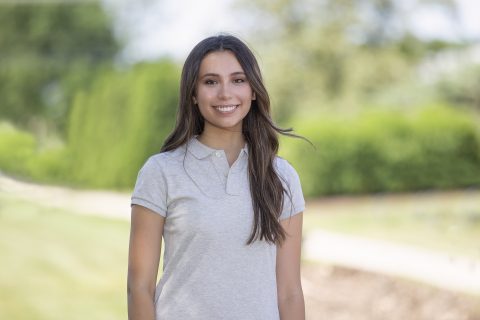
Growing up, whenever inspiration struck, I would rush over to the desk in my parents’ office and raid their stack of printer paper. The next several hours I would be consumed with drawing pictures that correlated with the stories running rampant in my head. I would then meticulously tape each page together to form a picture book. Since I could not yet write, my mother would fill in the words as I explained the events taking place on each page.
One Friday afternoon, as I was working on a drawing for yet another one of my “books,” my grandparents came to visit. My grandfather, a retired surgeon, was infamous for his witty and practical personality. The day they visited, I was working on a picture of our family. As I sat, finishing the last face, I noticed my grandfather peering over my shoulder looking at my drawing. Unfazed, I went back to work, adding the final touch—a dot in the center to represent a nose. “You know, noses don’t really look like that,” my grandfather suddenly remarked. I looked up at him confused, as he continued to gesture to the faces saying, “Noses aren’t dots. Look at your nose; it’s not a dot, and neither is mine. You should draw a nose that looks like a nose.” He then walked away as I sat there, dumbfounded.
I guess it was something I had to have known. Noses are not dots. I mean, I saw my own face every day in the mirror and I didn’t have a dot for a nose. Nevertheless, his remarks caused me to become obsessed with learning how to draw a realistic nose. I spent countless hours scrutinizing the faces of those around me; however, it seemed as though the more I looked, the more impossible the task became. How was I to learn how to draw a “real” nose, when everyone’s nose—and face, for that matter—was so completely unique?
It’s funny to me now just how clear this memory is. Yet, I do believe that it was moments such as this that shaped me into who I am today and influenced my choice in course of study. I am an English, pre-medicine major, and while I attribute my decision to study English to my love for writing—which no doubt stemmed from my early picture book-making days, I believe that art is the reason I want to pursue medicine.
My initial obsession with wanting to draw a perfect nose led me down a rabbit hole. Soon I was learning to draw eyes, then hands, then whole bodies and, eventually, became curious as to how they functioned. Specialties such as dermatology and plastic surgery are of particular interest to me, as they combine science with art and aesthetics. Nevertheless, I know that I will enjoy whichever specialty I end up choosing, as art can be found in all aspects of science, due in part to the great diversity imparted by the Creator.
I am grateful to attend a school that highlights this diversity. While attending Andrews University, one of the most diverse schools in the nation, I have been able to learn about many different cultures and people. My professors also have encouraged me to have diversity of thought and expression.
Last year, when I was taking my Social Justice and the Graphic Novel class, I was given the option of creating a graphic novel about a social justice issue for my final project. Due to the nature of my major, I was used to writing long final papers or taking cumulative science exams, so when presented with this opportunity, I decided to go for it.
My graphic novel ended up being a story I had wanted to tell for a long time but didn’t know how. However, through art I was able to explain my experience attending a primarily minority school that was later shut down. Adding drawings to my writing helped me to highlight certain details of the story in a way that would not have been possible had I just used my words. This experience made me realize that art can be just as impactful as science and English and that there is a place for content like the picture books I spent so many hours of my childhood creating.
As I’m sure you’re wondering, I did eventually learn how to draw a “realistic” nose. After some time and practice, I graduated from drawing two-dimensional dot noses to three dimensional ones that represented the different people I observed around me. I also learned that I will never draw every nose in existence, and that is not necessarily a bad thing. If everyone and everything looked the same, then so would all of my drawings. Furthermore, I have come to better appreciate this diversity and actively look for settings in which the uniqueness of people, nature and ideas is prominent. As I prepare to graduate next year, I hope to take these lessons with me and to continue to look for opportunities to implement creativity in all I do.
